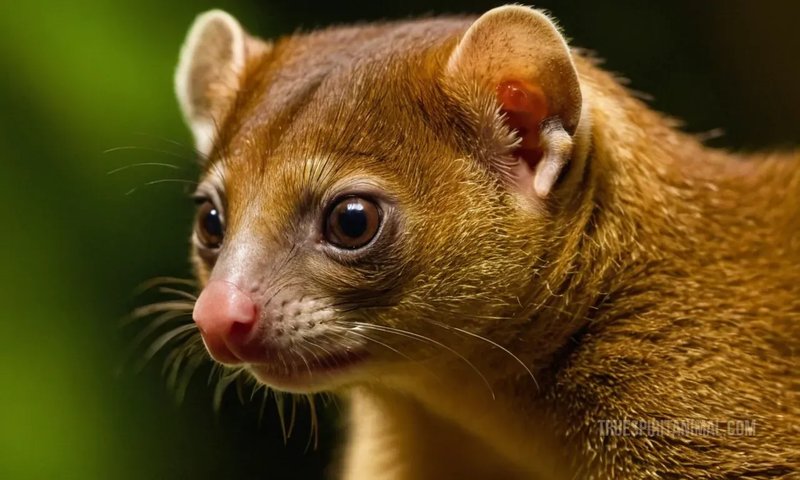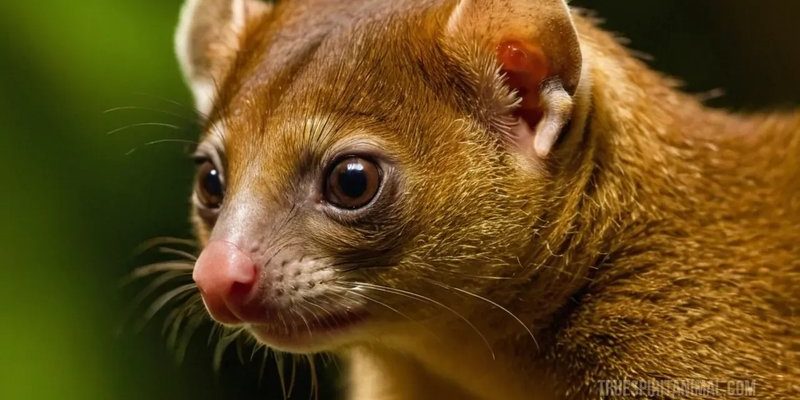
Imagine sipping your favorite coffee and being transported to lush rainforests where these playful mammals swing from branches. They’re not just cute faces; they play significant roles in both local lore and the wider cultural imagination. In this article, I’ll delve into how the kinkajou is depicted in culture and folklore, revealing its charm and importance in various societies.
Understanding the Kinkajou: A Brief Overview
Kinkajous are native to Central and South America, thriving in tropical forests from Honduras to Brazil. Weighing around 4-10 pounds and about 16-24 inches long, they have long tails that help them balance while climbing and jumping through the trees. With their big, expressive eyes and soft, velvety fur, kinkajous are often called “honey bears.” This nickname comes from their penchant for sweet foods, particularly honey.
In the wild, they play an essential role in their ecosystems by pollinating flowers and dispersing seeds. This means they’re not just adorable; they also contribute to the health of their habitats! As nocturnal creatures, kinkajous are most active at night, exploring their surroundings and foraging for snacks.
This vibrant lifestyle has allowed them to weave their way into cultural narratives, inspiring stories that highlight their playful yet mysterious nature.
Kinkajous in Indigenous Folklore
In many indigenous cultures, animals are often seen as symbols or messengers. The kinkajou is no exception. Among some indigenous tribes in Central America, the kinkajou is celebrated as a symbol of happiness and joy. Its playful behavior embodies the spirit of life, reminding people to find happiness in small things.
One popular story tells of a kinkajou that helps lost travelers find their way home. In this tale, the kinkajou uses its keen senses and knowledge of the forest to guide the travelers safely back, showcasing its wisdom and connection to the natural world. Such stories create a bond between people and nature, emphasizing the importance of preserving wildlife.
Similarly, in Brazilian folklore, kinkajous are often depicted as tricksters—clever creatures that use their wit to outsmart predators. This playful representation adds a layer of personality to the kinkajou, capturing human experiences of joy and cunning.
Kinkajous in Modern Culture
Fast forward to today, and the kinkajou still captures hearts in modern culture. You might see them showcased in wildlife documentaries, where their playful antics and unique social behaviors are highlighted. In social media, pictures of kinkajous frolicking in their natural habitats have become viral sensations, drawing attention from animal lovers worldwide.
But it’s not just on screens where kinkajous shine. Some people even keep kinkajous as exotic pets. Their social nature makes them appealing companions, but it’s crucial to understand the commitment that comes with caring for such a unique animal. Potential pet owners need to consider their lifestyle and ensure they can provide a suitable environment for a kinkajou’s needs.
While keeping kinkajous as pets can be controversial, it often sparks conversations on wildlife conservation and the ethics of exotic pet ownership. When we admire these creatures in movies or social media, we’re reminded of the beauty of wildlife and the importance of protecting their natural habitats.
The Kinkajou’s Role in Conservation Efforts
As awareness of endangered species increases, the kinkajou has found itself at the center of conservation discussions. Their habitats in Central and South America face threats from deforestation and habitat loss. By understanding the kinkajou’s role in the ecosystem, conservationists emphasize the importance of preserving rainforests for the sake of countless species, including these adorable mammals.
Kinkajous help spread seeds, which supports the growth of new plants. When we protect them, we’re not just saving a species; we’re nurturing entire ecosystems. Several conservation organizations are working to educate local communities about sustainable practices, highlighting the kinkajou as a charismatic ambassador for the rainforest.
Programs aimed at preserving kinkajou habitats also address issues like logging and agriculture, showing that protecting wildlife can lead to better livelihoods for local communities. Everyone benefits when nature thrives!
Kinkajous in Literature and Art
It’s fascinating to see how kinkajous have been represented in literature and art. In children’s books, they often appear as playful, curious characters who embark on magical adventures. These stories not only entertain but also educate young readers about wildlife, instilling a sense of wonder and respect for animals.
In art, kinkajous might be depicted in vibrant, colorful paintings that celebrate their playful spirit. Artists often draw inspiration from their natural beauty, using bold colors to capture the essence of the kinkajou. These representations foster a deeper appreciation for the wonders of nature and encourage conversations about wildlife conservation.
Moreover, some contemporary artists use kinkajous as a symbol of environmental awareness. By incorporating them into their work, they spark discussions around endangered species and habitat loss, making the kinkajou not just an object of beauty but also a powerful symbol for change.
In wrapping up our journey through the vibrant world of kinkajous, it’s clear that these delightful creatures hold a special place in various cultures and folklore. From their representation as symbols of joy in indigenous stories to their roles in modern conservation efforts, kinkajous remind us of the interconnectedness of all life.
Their playful nature and significance in storytelling have made them enduring characters in the dance of life that unfolds in forests. By protecting kinkajous and their habitats, we ensure that their legacy continues. So, the next time you come across a kinkajou—whether in a book, a documentary, or a conversation—take a moment to appreciate the rich tapestry of culture, folklore, and environmental significance they bring with them.

